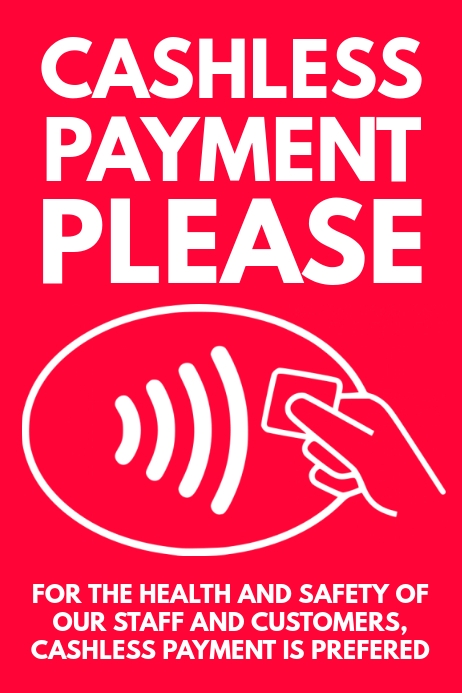 The cashless transaction device is growing exponentially with evolving payment methods, rising e commerce consumption, enhanced broadband internet connectivity, then growth of new technologies. Could increasing incidences of cyber attacks & spams hamper the development of internet payment industry or can it carry on and grow at an immediate rate?
The cashless transaction device is growing exponentially with evolving payment methods, rising e commerce consumption, enhanced broadband internet connectivity, then growth of new technologies. Could increasing incidences of cyber attacks & spams hamper the development of internet payment industry or can it carry on and grow at an immediate rate?
The worldwide electronic transaction sector is anticipated to get to the USD6.6 trillion mark in 2021, registering close to a forty % jump in 2 seasons. The cashless payment methods are quickly changing with ground breaking new developments like mobile wallets, peer-to-peer (P2P) mobile payments, real time payments, plus cryptocurrencies. In the increasing digital era, lots of transaction technology companies are collaborating with conventional financial institutions to focus on the most recent customer as well as merchant tastes. Because of enhanced broadband internet connectivity, boosting mobile commerce, growth of new technologies such as for instance Virtual Reality, Artificial Intelligence, along with fast digitization, vast amounts of individuals have begun adopting con-tactless payments in equally advanced and emerging nations. Also, surging e commerce businesses, electronic remittances, electronic business payments, along with mobile B2B payments are improving the non cash transaction ecosystem.
Cashless transaction method owners throughout different decades are broadly following the electronic peer-to-peer (P2P) apps as they’re far more attractive and adaptable to work with. In-app payments or perhaps tap-and-go transactions take seconds in the checkout and enable people making payments anywhere and anytime. Tokenization, encryption, Secure Sockets Layer (SSL), etc., provide numerous methods of securing payments while enabling electronic transactions. Furthermore, the users don’t need to fill in info each time to finish the payment process. Consequently, internet payment gateways play an important part in the economic development, enabling swap in the contemporary economy. With societal distancing regulations in place, electronic payments have grown to be an obligation for contactless transactions instead of merely a transaction option to stop the spread of coronavirus.
Electronic Commerce Empowering Businesses
Electronic payment methods have turned out to be an important part of organizations as consumer inclination towards internet shopping is expanding. With broadening online penetration, increasing use of smartphones, and different choices for e transactions, nearly all individuals are preferring internet channels of conventional brick-and-mortar retailers for shopping. Thus, companies are changing online with an electronic transaction formula to take full advantage of the profit earnings of theirs. Automating the electronic payment process eliminates the scope of mistakes and saves a significant quantity of effort and time. standards that are High for detecting as well as stopping fraud in electronic transaction methods as well as AI based fraud detections shield owners from security breaches. By giving the flexibility to make payments via credit/debit cards, etc., e-Wallet, mobile money, the companies are able to expand the client base of theirs. The electronic payment procedure betters customer satisfaction as clients don’t have to count deal or money with paperwork every time they wish making the transaction.
Biometric Authentication Enhancing Security
Biometric authentication entails recognizing biometric functions as well as structural attributes to confirm the identification of a person. The verification strategy is able to involve fingerprint scanning, iris detection, vein mapping, voice recognition, facial recognition, and heartbeat evaluation. With the increase in fraud and identity theft, biometric authentication has turned into a secure and reliable alternative for creating digital transactions. Based on a recently available research, biometrically verified mobile commerce transactions are anticipated to comprise a substantial fifty seven % of the entire biometric transaction by 2023. Biometric transaction cards also are getting common as they support tap-and-go payments, enabling users making faster electronic transactions. The electronic transaction technology provider, Worldline is partnering up together with the French FinTech, A3BC (Anything Anywhere Anytime Biometric Connection), to guard mobile phones from intrusion with a two factor authentication procedure. The consolidated remedy removes identification with one touch, rather it recognizes fingerprints with a photograph of the hands. MasterCard is preparing to deliver FinGo’s vein scanning transaction remedy which facilitates people to authenticate transactions.
Dominance of Mobile Wallets In 2019, movable wallets overtook credit cards to be the extremely followed transaction style internationally. Digital wallets provide flexibility to users to keep several payment methods in a single digital house and then turn cash into electronic cash necessary for online or maybe in store purchases. Financial institutions have started to embrace the electronic wallet trend by providing virtual cards to company customers. The virtual cards kept in electronic wallets include details including 16 digit card number, CVV code, date of work as well as expiry the same as the bodily plastic card. Presently, just thirty seven % of merchants support mobile payments in the purpose of purchase, but with the increasing adoption, merchants are ready to purchase solutions facilitating electronic wallets. The virtual wallets are able to save cash due to lower processing fees as they restrict transaction values as well as frequency. Artificial Intelligence (AI) is enhancing the user experience with respect to transactions with ChatBots, created to perform as well as robotize crucial exchanges as per the user’s interest. Also, cryptographic money based e-wallets are now being embraced by companies that are new to small medium organizations for storing digital cash. Wise voice engineering is leading to the development of intelligent voice wallets ever since Amazon propelled the concept of the platform, and that is currently being adhered to by Apple and Google.
E-Commerce Boom Accelerating Digital Payment Market Growth
E-commerce development in an exponential rate is making shock waves, and the sonic boom is reverberating throughout the FinTech sector. The expansion of countless e commerce businesses is pushed by the type of financial services they offer. Electronic transactions ensure it is handy for the customer as well as seller making transactions and stay dedicated to the market area. The COVID 19 pandemic included a unique dimension to e commerce innovation, introducing newer trends like fee options at checkouts (not with electronic wallets), QR codes, virtual cards, along with any other touchless transactions. Also, the Buy Now Pay Later (BNPL) development is dominating the e commerce market as it relieves the economic burden on the customer. BNPL requires a gentle credit check, therefore the customers are able to purchase whatever they need to have, maintain the inventory moving, then pay overtime without affecting the credit score of theirs. BNPL supplies businesses with much needed liquidity and greater flexibility in the checkout.
Effect of COVID 19 Pandemic on Digital Payment Market Growth Digital transaction methods have moved beyond their peer-to-peer (P2P) transfers as well as bill payments. The COVID-19 pandemic allowed electronic transaction methods to showcase the strengths of theirs, like a strong understanding of hyper local marketplaces and the power of its to establish strong community partnerships. Consumers and businesses increasingly “went digital” for offering as well as purchasing goods as well as services online. If the pandemic hit, individuals didn’t wish to touch or even exchange cash because of the paranoia of catching the illness from physical currencies. Many governments all over the world introduced digital economic transfers to offer COVID-assistance. Owing to lockdown methods, customers shifted to internet platforms, that catapulted the need for electronic transaction methods. Today, electronic platforms have grown to be a crucial element of individuals lives, and customers tend to be more apt to keep shopping online in the post pandemic period. The remarkable shift of consumer behavior is apt to augment the need for e-payment systems all the more. Thus, companies are focusing the attention of theirs on electronic mediums to meet up with the brand new customer demands and thrive companies in the changing industry scenario. Organizations are reimagining buyer journeys to greatly reduce friction and also give brand new security features. Payment businesses like Square and paypal Cash are staffing in place across the board to better understand the rearrangement of societal norms and stabilize the company in the future.
e-Payment Systems will be the Future With increasing smartphone as well as web penetration, individuals are starting to be tech savvy, which creates endless opportunities for the electronic transaction marketplaces. Post-pandemic, electronic transaction methods are anticipated to still flourish through the years to come. While cards remain the very first option for payments across the planet, mobile wallets are rapidly gaining traction. The standard cash flow is decreasing in bank branches as well as ATMs, demonstrating a strength move towards a cashless society. Presently, China dominates the worldwide mobile finances usage, followed by South Korea. Nevertheless, you will still find numerous places which are very influenced by money because of insufficient trust towards financial institutions as well as absence of suitable broadband infrastructure, etc. In the near future, biometric payments, social media-initiated payments, voice activated payments will probably be mainstream in developing countries also.
Cybersecurity as well as Privacy Concerns with Online Payment Solutions Cybersecurity and security risks have turned out to be a troubling worry with the increasing incidences of internet fraud. Based on the Mastercard survey, 1 out of 4 customers encountered some sort of fraud in 2020, ramping up the cybercrime price by forty nine %. Within the very first half of 2020, internet scams elevated by 73.8 % from 2019. Nevertheless, developing new age solutions including Machine Learning, Artificial Intelligence, 3D security, biometrics, and multifactor authentication is able to assist manage fraudulent tasks like phishing, virus hits, etcetera. Shifting to contactless cards, QR codes, and even tokenization could additionally help mitigate risks related to electronic transaction strategies. Besides, sensitizing end-users regarding the protected use of e-payment solutions via amplifying initiatives towards building financial literacy is able to make it possible to avoid frauds. The growth of the evolution and mobile commerce of e payment platforms backed by strong security strategies are able to make it possible to get the aim of making the economic system really cash-less




